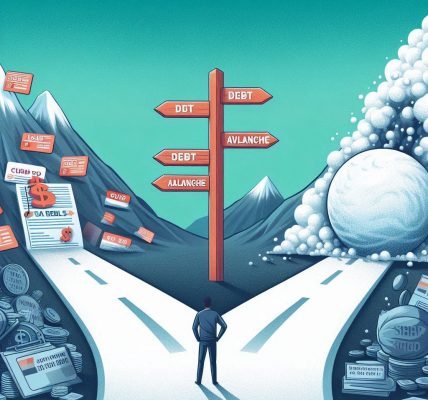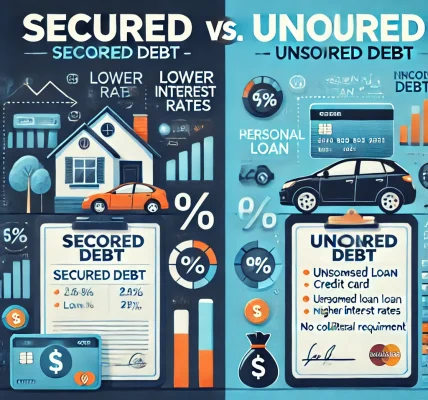Introduction
Managing debt effectively is crucial for financial stability. One popular strategy is using a balance transfer credit card to consolidate and pay off existing debt. But is it the right choice for you? In this guide, we’ll explore the benefits, risks, and best practices to help you make an informed decision.
What is a Balance Transfer Card?
A balance transfer card allows you to move existing high-interest debt from one or multiple credit cards to a new credit card, often with a 0% introductory APR for a set period. This can significantly reduce the interest you pay, making it easier to pay off debt faster.
Benefits of Using a Balance Transfer Card
1. Lower Interest Rates
Most balance transfer cards offer an introductory period with 0% interest, typically ranging from 6 to 24 months. This can help you save money on interest and pay down the principal faster.
2. Simplified Debt Management
Instead of juggling multiple credit card payments with different interest rates, a balance transfer consolidates your debt into one manageable payment.
3. Faster Debt Repayment
Since you’re not accruing interest during the promotional period, more of your payment goes toward reducing your balance, allowing you to pay off debt more quickly.
4. Potential Credit Score Improvement
By reducing your credit utilization ratio and making timely payments, using a balance transfer card strategically can improve your credit score.
Risks and Downsides to Consider
1. Balance Transfer Fees
Most credit cards charge a balance transfer fee, usually 3-5% of the transferred amount. This fee can add up, so it’s important to calculate whether the savings outweigh the cost.
2. Limited Promotional Period
Once the 0% APR period ends, the interest rate may jump significantly. If you haven’t paid off the balance by then, you could find yourself paying high interest rates again.
3. Potential Credit Score Impact
Opening a new credit card results in a hard inquiry on your credit report, which can temporarily lower your score. Additionally, if you max out your new card, your credit utilization ratio may increase, negatively affecting your credit score.
4. Temptation to Accumulate More Debt
A balance transfer card provides temporary relief, but without disciplined financial habits, you could end up in more debt if you continue to use your old credit cards irresponsibly.
How to Use a Balance Transfer Card Wisely
1. Choose the Right Card
Look for a balance transfer card with a long 0% APR period, low fees, and terms that align with your repayment plan.
2. Calculate Your Payoff Plan
Divide your total transferred balance by the number of months in the 0% APR period to determine how much you need to pay each month to clear the debt before interest kicks in.
3. Avoid New Purchases
Most balance transfer cards charge interest on new purchases unless they also have a 0% APR offer on purchases. Stick to using the card for debt repayment only.
4. Make On-Time Payments
Missing a payment can result in losing your promotional interest rate, leading to a much higher interest charge. Set up automatic payments to ensure you never miss a due date.
5. Keep Old Accounts Open
Closing old credit card accounts after transferring balances may negatively impact your credit score. Keep them open to maintain your credit history and utilization ratio.
Who Should Consider a Balance Transfer Card?
- Individuals with high-interest credit card debt who can pay it off within the 0% APR period.
- Those with a good credit score (typically 670 or higher) to qualify for the best balance transfer offers.
- People committed to a structured repayment plan to avoid accumulating more debt.
Who Should Avoid a Balance Transfer Card?
- Individuals who cannot pay off the balance within the promotional period.
- Those with a low credit score who may not qualify for favorable terms.
- People who struggle with overspending and may end up accumulating new debt.
Alternative Debt Repayment Strategies
1. Debt Snowball Method
Focus on paying off the smallest debt first while making minimum payments on other debts. This builds momentum and motivation.
2. Debt Avalanche Method
Prioritize paying off the highest interest rate debt first to save the most money in interest over time.
3. Personal Loans
A personal loan with a lower interest rate than your credit cards can be a good alternative for consolidating debt.
4. Negotiating with Creditors
Contact your creditors to negotiate lower interest rates, payment plans, or settlements to reduce your debt burden.
Conclusion
Using a balance transfer card can be a smart way to pay off debt if used responsibly. However, it’s essential to weigh the pros and cons and ensure you have a clear repayment plan. If you’re disciplined and strategic, a balance transfer card can help you become debt-free faster while saving money on interest.
If you’re considering this option, research different balance transfer offers, calculate the costs, and develop a structured plan to maximize the benefits. With the right approach, you can take control of your finances and achieve long-term financial stability.




